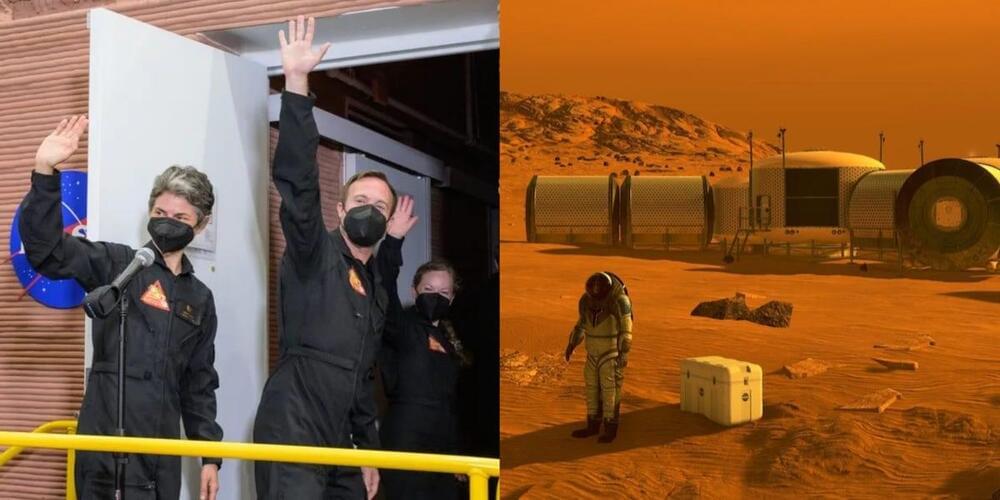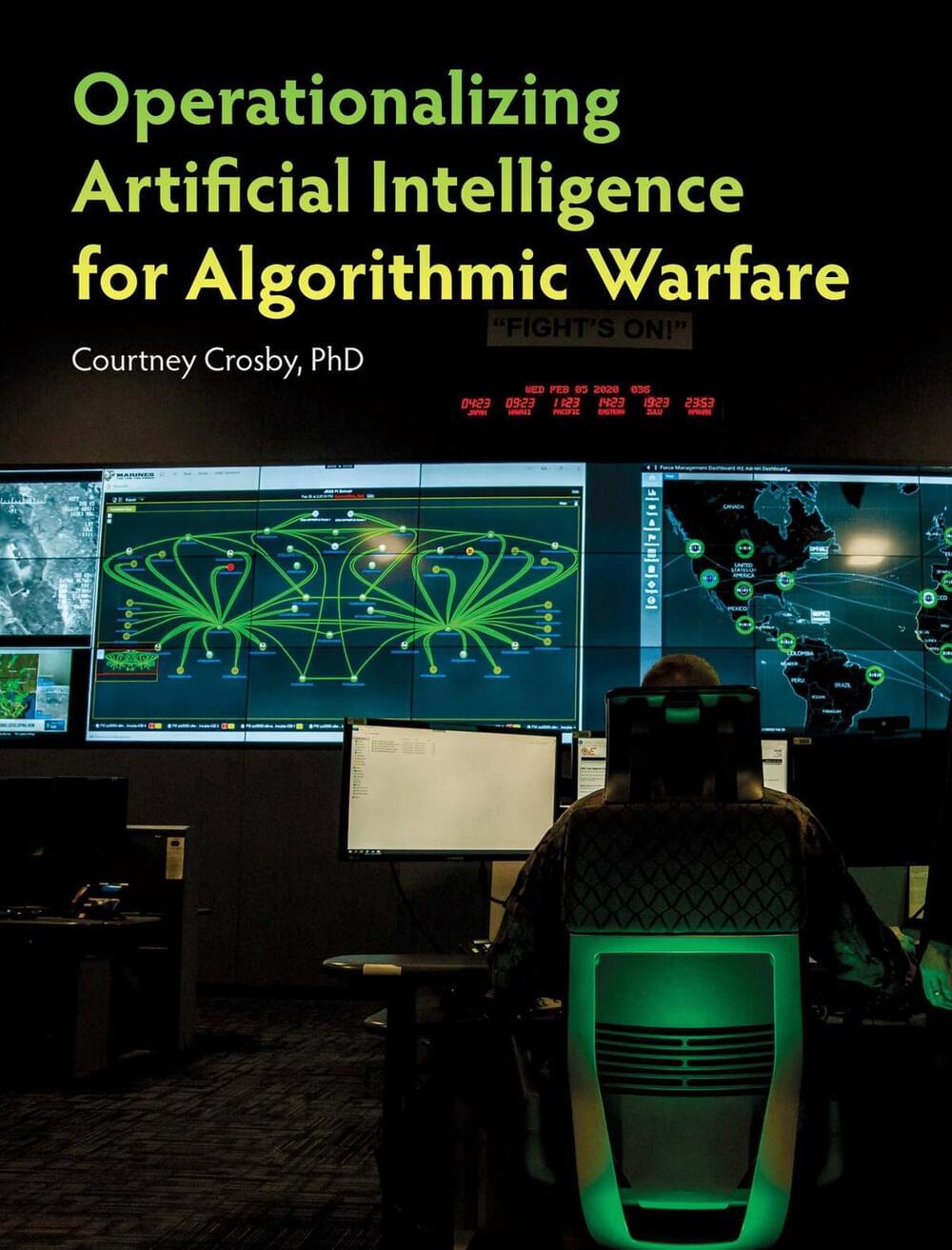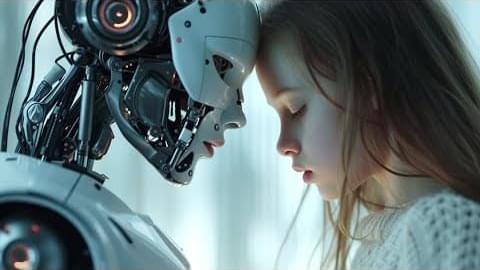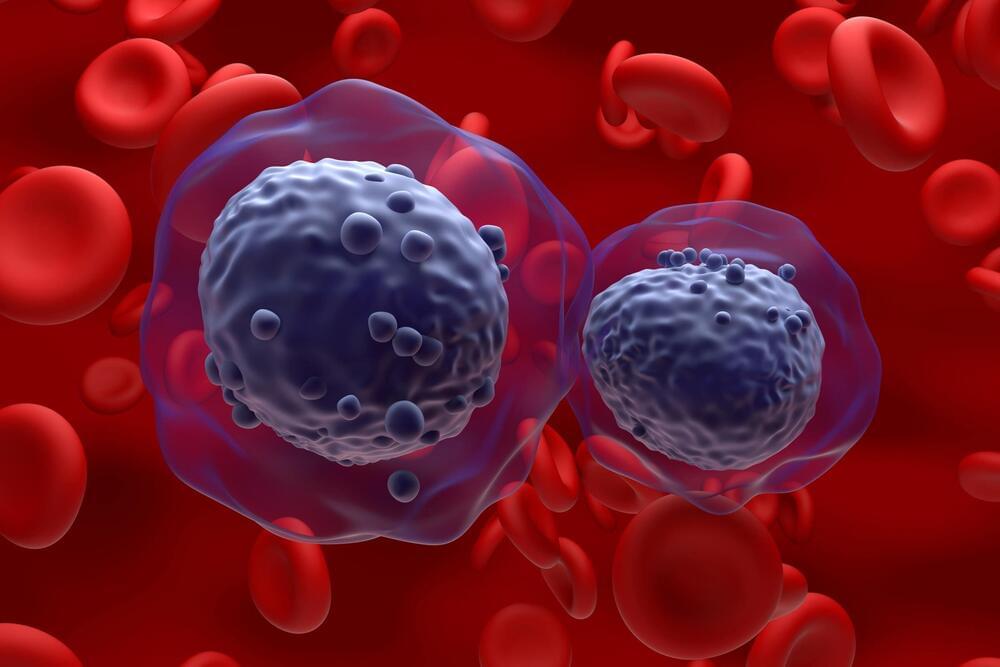Apply to live in NASA’s Mars simulation for one year, where a four-person crew grows crops, practices “Marswalks,” and exercises diligently.
As a part of a multi-part series, TechCrunch is highlighting women innovators — from academics to policymakers — in the field of AI.
Crosby-Operationalizing-AI-1.pdf
Posted in robotics/AI
Companies are using artificial intelligence tools to screen potential employees but they are screening out highly-qualified candidates.
Year 2022 Basically this enzyme could destroy the great garbage patch and all plastics in the ocean 😀 😍
Chemists unlock the secrets of a plastic-eating bacterium, hoping to harness them for good.
Year 2023 😗 😁
A new study published in the Journal of Hazardous Materials by researchers at the Royal Botanic Gardens, Kew, and partners has identified a diverse microbiome of plastic-degrading fungi and bacteria in the coastal salt marshes of Jiangsu, China.
The international team of scientists counted a total of 184 fungal and 55 bacterial strains capable of breaking down polycaprolactone (PCL), a biodegradable polyester commonly used in the production of various polyurethanes. Of these, bacterial strains within the genera Jonesia and Streptomyces have the potential to further degrade other petroleum-based polymers—natural or synthetic chains of molecules bound together.
The plastic-degrading microorganisms were sampled in May 2021 from Dafeng in eastern China, a UNESCO-protected site near the Yellow Sea Coast. The sampling confirmed the presence of a terrestrial plastisphere, a term that is relatively new to terrestrial ecology as past studies have primarily focused on marine environments. The microbiome of this “man-made ecological niche” of coastal plastic debris was further found to be distinct from the surrounding soil.
J. Robert Oppenheimer’s grandson is among the star-studded signatories of a new open letter about the dangers artificial intelligence poses to the planet.
The letter, which was issued by the Nelson Mandela-founded group The Elders in conjunction with the Future of Life Institute, calls on global decisionmakers to “show long-view leadership on existential threats,” including “ungoverned AI” and nuclear weapons.
Charles Oppenheimer, who founded the Oppenheimer Project to continue his grandfather’s mission of tempering scientific progress with “international cooperation and unity,” was joined by hundreds of others, including British billionaire Richard Branson, AI pioneer Geoffrey Hinton, writer and Carl Sagan widow Ann Druyan, and musician Peter Gabriel. In it, they warn that the world “is in grave danger” as we face down the perils of AI.
This video explores 20 emerging technologies and their future. Watch this next video about the 10 stages of AI: • The 10 Stages of Artificial Intelligence.
🎁 5 Free ChatGPT Prompts To Become a Superhuman: https://bit.ly/3Oka9FM
🤖 AI for Business Leaders (Udacity Program): https://bit.ly/3Qjxkmu.
☕ My Patreon: / futurebusinesstech.
➡️ Official Discord Server: / discord.
💡 Future Business Tech explores the future of technology and the world.
Examples of topics I cover include:
• Artificial Intelligence & Robotics.
• Virtual and Augmented Reality.
• Brain-Computer Interfaces.
• Transhumanism.
• Genetic Engineering.
SUBSCRIBE: https://bit.ly/3geLDGO
Disclaimer:
Some links in this description are affiliate links.
As an Amazon Associate, I earn from qualifying purchases.
This video explores 20 emerging technologies and their future. Other related terms: ai, artificial intelligence, future business tech, future technology, future tech, future business technologies, future technologies, artificial general intelligence, artificial superintelligence, superintelligence, future city, radical life extension, crisp, quantum computer, neuralink, humanoid robot, generative ai, starlink, nanotechnology, smart cities, mixed reality, autonomous vehicles, blockchain, lab grown meat, smart home, fusion power, space tourism, artificial wombs, etc.
Scientists at The University of Texas at Austin have discovered how an aggressive and deadly form of leukemia fuels its growth. In an experimental study, they were able to curb the cancer’s growth without harming healthy cells. The finding provides clues for future drug developers about how to increase the effectiveness of one type of chemotherapy.
The study, led by Xiaolu Cambronne of the Department of Molecular Biosciences, in collaboration also with researchers at Dell Medical School and in the Department of Nutritional Sciences, is published in Cell Metabolism.
Acute myeloid leukemia (AML) is an aggressive cancer that starts in the blood-forming cells of the bone marrow. Known for rapid expansion, the cancer kills approximately 11,000 Americans each year. Most of the cases of AML occur in adults over 65, a population that often responds poorly to aggressive treatments, such as bone marrow transplants, and thus has limited options.
And it’s also about seven times the price of the Quest 3, Meta’s current answer to the Vision Pro. It’s not as flashy as the Vision Pro, but right now you can do a lot more with it. Meta CEO Mark Zuckerberg was eager to point that out in his impromptu review of Apple’s headset. Meta’s strategy is focusing on what you can do now, and doing that gives people a reason to stick around. If they stick around, they’ve inherently bought into your idea of the future.
It’s too early to say how Apple’s tried-and-true approach will pan out. But a common complaint I’ve seen from Vision Pro buyers is they don’t know what to do with it besides watch movies. It’s also too early to say whether Meta glasses users will stick around long term. (They certainly didn’t for the Ray-Ban Stories.) But we do know one thing: at the end of his Vision Pro review, Zuckerberg said the Ray-Ban Meta Smart Glasses sales have far exceeded his hopes.









